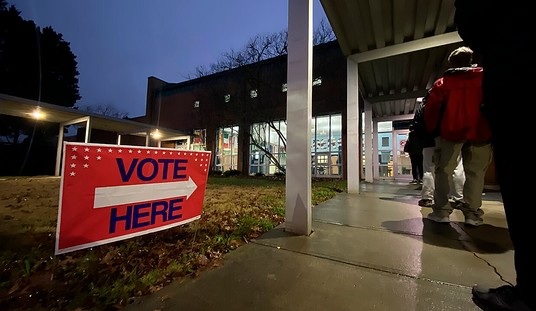With the terrible earthquake and resulting tsunami that have devastated Japan, the only good news is that anyone exposed to excess radiation from the nuclear power plants is now probably much less likely to get cancer.
This only seems counterintuitive because of media hysteria for the past 20 years trying to convince Americans that radiation at any dose is bad. There is, however, burgeoning evidence that excess radiation operates as a sort of cancer vaccine.
As The New York Times science section reported in 2001, an increasing number of scientists believe that at some level -- much higher than the minimums set by the U.S. government -- radiation is good for you. "They theorize," the Times said, that "these doses protect against cancer by activating cells' natural defense mechanisms."
Among the studies mentioned by the Times was one in Canada finding that tuberculosis patients subjected to multiple chest X-rays had much lower rates of breast cancer than the general population.
And there are lots more!
A $10 million Department of Energy study from 1991 examined 10 years of epidemiological research by the Johns Hopkins School of Public Health on 700,000 shipyard workers, some of whom had been exposed to 10 times more radiation than the others from their work on the ships' nuclear reactors. The workers exposed to excess radiation had a 24 percent lower death rate and a 25 percent lower cancer mortality than the non-irradiated workers.
Isn't that just incredible? I mean, that the Department of Energy spent $10 million doing something useful? Amazing, right?
In 1983, a series of apartment buildings in Taiwan were accidentally constructed with massive amounts of cobalt 60, a radioactive substance. After 16 years, the buildings' 10,000 occupants developed only five cases of cancer. The cancer rate for the same age group in the general Taiwanese population over that time period predicted 170 cancers.
Recommended
The people in those buildings had been exposed to radiation nearly five times the maximum "safe" level according to the U.S. government. But they ended up with a cancer rate 96 percent lower than the general population.
Bernard L. Cohen, a physics professor at the University of Pittsburgh, compared radon exposure and lung cancer rates in 1,729 counties covering 90 percent of the U.S. population. His study in the 1990s found far fewer cases of lung cancer in those counties with the highest amounts of radon -- a correlation that could not be explained by smoking rates.
Tom Bethell, author of the "Politically Incorrect Guide to Science," has been writing for years about the beneficial effects of some radiation, or "hormesis." A few years ago, he reported on a group of scientists who concluded their conference on hormesis at the University of Massachusetts by repairing to a spa in Boulder, Mont., specifically in order to expose themselves to excess radiation.
At the Free Enterprise Radon Health Mine in Boulder, people pay $5 to descend 85 feet into an old mining pit to be irradiated with more than 400 times the EPA-recommended level of radon. In the summer, 50 people a day visit the mine hoping for relief from chronic pain and autoimmune disorders.
Amazingly, even the Soviet-engineered disaster at Chernobyl in 1986 can be directly blamed for the deaths of no more than the 31 people inside the plant who died in the explosion. Although news reports generally claimed a few thousand people died as a result of Chernobyl -- far fewer than the tens of thousands initially predicted -- that hasn't been confirmed by studies.
Indeed, after endless investigations, including by the United Nations, Manhattan Project veteran Theodore Rockwell summarized the reports to Bethell in 2002, saying, "They have not yet reported any deaths outside of the 30 who died in the plant."
Even the thyroid cancers in people who lived near the reactor were attributed to low iodine in the Russian diet -- and consequently had no effect on the cancer rate.
Meanwhile, the animals around the Chernobyl reactor, who were not evacuated, are "thriving," according to scientists quoted in the April 28, 2002 Sunday Times (UK).
Dr. Dade W. Moeller, a radiation expert and professor emeritus at Harvard, told The New York Times that it's been hard to find excess cancers even from Hiroshima and Nagasaki, particularly because one-third of the population will get cancer anyway. There were about 90,000 survivors of the atomic bombs in 1945 and, more than 50 years later, half of them were still alive. (Other scientists say there were 700 excess cancer deaths among the 90,000.)
Although it is hardly a settled scientific fact that excess radiation is a health benefit, there's certainly evidence that it decreases the risk of some cancers -- and there are plenty of scientists willing to say so. But Jenny McCarthy's vaccine theories get more press than Harvard physics professors' studies on the potential benefits of radiation. (And they say conservatives are anti-science!)
I guess good radiation stories are not as exciting as news anchors warning of mutant humans and scary nuclear power plants -- news anchors who, by the way, have injected small amounts of poison into their foreheads to stave off wrinkles. Which is to say: The general theory that small amounts of toxins can be healthy is widely accepted --except in the case of radiation.
Every day Americans pop multivitamins containing trace amount of zinc, magnesium, selenium, copper, manganese, chromium, molybdenum, nickel, boron -- all poisons.
They get flu shots. They'll drink copious amounts of coffee to ingest a poison: caffeine. (Back in the '70s, Professor Cohen offered to eat as much plutonium as Ralph Nader would eat caffeine -- an offer Nader never accepted.)
But in the case of radiation, the media have Americans convinced that the minutest amount is always deadly.
Although reporters love to issue sensationalized reports about the danger from Japan's nuclear reactors, remember that, so far, thousands have died only because of Mother Nature. And the survivors may outlive all of us over here in hermetically sealed, radiation-free America.

























Join the conversation as a VIP Member